Fairy tales. What does this familiar and understandable word mean? Probably about those stories that my mother used to read or grandmother told at night. Fairy tales are closely connected with a soft pillow and a warm blanket. For someone with the smell of hot tea or the taste of unloved semolina. They resemble something very dear and pleasant, simple and instructive, soothing and immersing in the world of sweet dreams. Tales teach to be compassionate, good, help the weak, fight evil. They make you dream. Tales bring up in children the best qualities of character through interesting and fascinating, sometimes a little scary, narration. But is it really so?
Tales of our childhood
Remembering the bygone childhood, most people who are now well over thirty recall fairy tales as an integral part of their carefree and barefoot period of their lives. And among the most popular, perhaps even amazing stories worn down to holes, images of fairy tales about the famous Koshchei come to mind. A bright and scary character stands out sharply with his humanoid, bony appearance, more reminiscent of an angry native from a Nazi concentration camp. He, as usual, languishes over gold, is constantly angry and does some intrigue. And, basically, he does them over women, more often over young princesses. It’ll imprison it in a tower, then it will turn it into a frog. At all times, Koschey is the personification of the greatest and most powerful evil. And over the course of any fairy tale story about a terrible villain, there is always a representative of good, who leads an implacable struggle with Koshchei and defeats him. And as a reward, of course, she receives the princess as a wife. How else? Indeed, in fairy tales, good must prevail over evil.
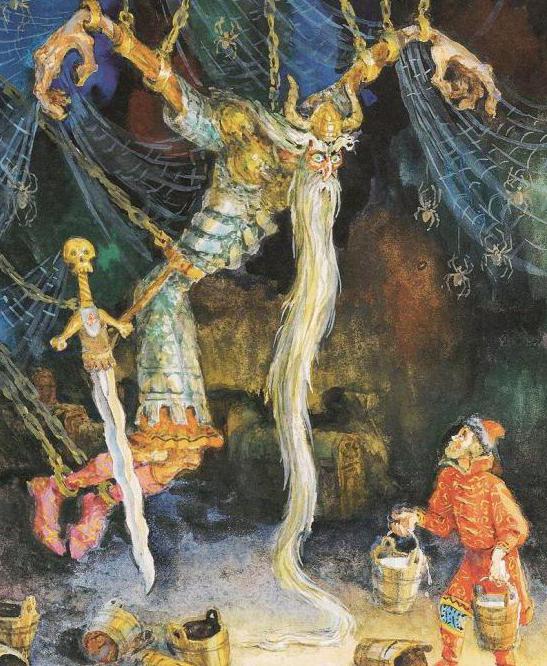
The origin of the word "koschey"
Let's try to look at the origins of the bony character. The very word Koschey in the 12th century meant a prisoner, captive or slave. In Russia, the parking lot was called a cat. And the elder or elder of the parking lot was called a koshova. He was the keeper of the general treasury and the manager of all the wealth of the settlement (parking). Later they began to call Koshchei a dry old man, often a greedy miser.
The image of Koshchei
Now it’s becoming more clear why Koschey’s fairy tales were just what he was. He plays the role of treasury guard, guarding his treasure. However, in fairy tales, from a slave or a prisoner, Koschey turns into a jailer. He abducts other heroes and keeps them locked up. Despite his outward frailty, Koschey is incredibly strong and agile. In most stories, he rides a horse, girded with a sword, and wears knightly armor. It looks very scary: old, bald, inconceivably thin, with a hooked nose and a cold look, with eyes glowing with hatred. Often he appears as an evil sorcerer, a representative of the dark and gloomy kingdom, similar to the afterlife. Therefore, any fairy tale about Koschei, where the main character defeats him, killing the immortal sorcerer, as if tells us about the victory of man over death itself. And this happens because each representative of the human race in his soul seeks immortality.
Baba Yaga - a unique character
It is no secret that quite often in films and fairy tales about Koshchei a certain extraordinary personality appears. This is an old and humpbacked hag, living in a magical hut on chicken legs, flying in a mortar with a broom at the ready. She can not be unambiguously ranked neither evil nor good characters. Sometimes she acts as a terrible cannibal witch and wants to gobble up the main character, a champion of goodness and justice. In another tale about Koshchei and Baba Yaga, you can see how the same harmful old woman in every possible way helps some Ivan Tsarevich in the fight against the old and evil hunks-sorcerer. He will tell you with advice, then in time he will give the right potion, then the glomerulus that indicates the road will throw. And the load will certainly tell the secret of the death of the Immortal. Consequently, in any of the tales about Koshchei the Immortal and Babu Yaga, a well-recognizable old woman becomes the connecting link between good and evil. And without it no fairy tale story is already unthinkable.
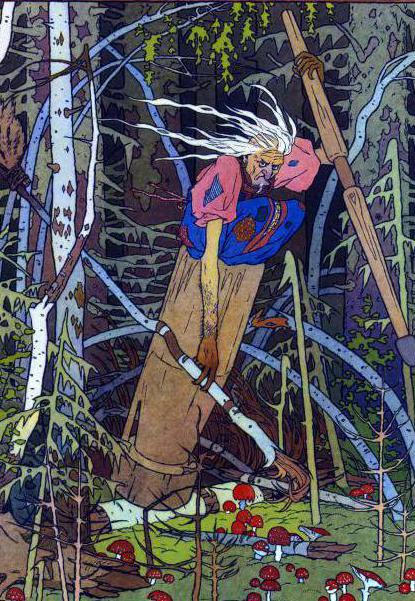
A little about Beloved Beauty
Even in fairy tales about Koshchei, there is always a heroine, which most often can be seen only at the end of the story. However, it is often mentioned throughout the whole narrative. Who is this? It can be either Vasilisa the Wise or Marya Tsarevna, or simply Beloved Beloved, who is abducted by a terrible bony sorcerer at the very beginning of the story.
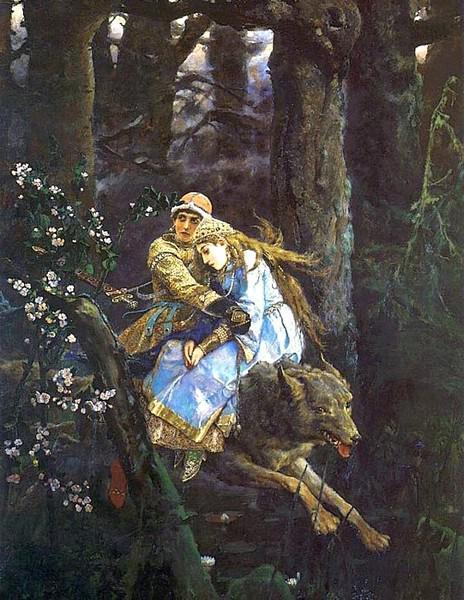
In other words, in the tale about Ivan Tsarevich and Koshchei there is a certain girl, as a rule, the bride of the protagonist. She is far from him, and the prince does not even suggest where to look for her. But in the end, she goes for her to the Far Far Away Koscheevo. Along the way, he meets Baba Yaga, who is already familiar to us, who voluntarily or coercively helps him in his search. However, without the young princess, whose main task is to sit in prison and grieve over her difficult fate, no Ivan Tsarevich would have a reason to go on a long journey and perform his exploits. It is the kidnapped bride who turns a wonderful guy in every way a simple guy into a real hero.
Ivan Tsarevich
Summing up some of the results of the previous paragraph, it turns out that the most amazing hero of films and fairy tales about Koshchei is the famous prince with a rare name Ivan.
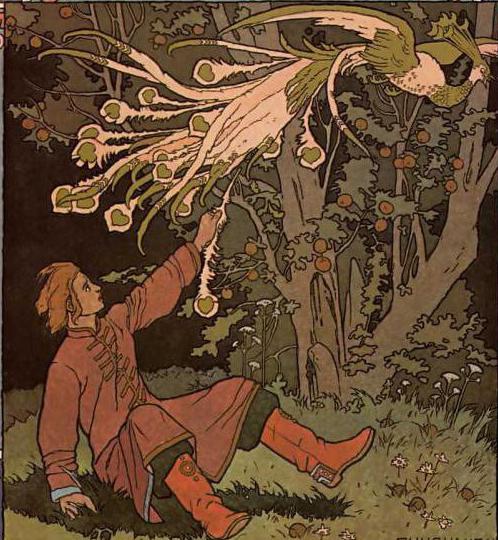
In different versions of fairy tales about Ivan Tsarevich and Koshchei the Immortal, his image is slightly different. You can quite definitely say that he is a very positive character and does good according to all the rules of the narrative. Sometimes he goes in search of his mother kidnapped by the villain. In another tale, barely reaching nine days of age, he suddenly decides to marry and sets off in search of his prospective bride - Beloved Beauty. Probably, the girl was so beautiful that she seduced her beauty even a nine-day baby. But in this story, Ivan Tsarevich does not behave like a baby. He is rude to elderly old women, beating the muzzles of dozens of warriors, incredibly sound and long sleeps - sometimes just for several days in a row. By the way, it was in this way that he overslept his Beloved Beauty, deciding to take a nap for about nine days. In another story, Ivan looks more decent and helps everyone who met on his way. As a result, those whom he helps afterwards benefit him in the fight against Koshchei the Immortal.
Elena the Beautiful or another tale about Koshchei
Returning again to the image of Koshchei the Immortal, we turn to the well-known fairy tale - "Elena the Beautiful." A familiar story begins with the unsuccessful and sad wedding of Ivan Tsarevich and Elena the Beautiful. Suddenly a swirling whirlwind takes the beauty-maiden right from the wedding feast to no one knows where. And here the adventures of the protagonist begin in a fairy tale about the prince and Koshchei. Ivan, as usual in all fairy tales, goes in search of his fiancée. And, of course, it goes through the forest, where he comes across a traditional hut on chicken legs. But this time, Baba Yaga does not know where to look for the girl, and directs Ivan to her middle sister, and she, in turn, to the older one. So the elder Babka-Yozhka advises the prince to forget about Elena the Beautiful, return home, find a new wife and calmly live with her until old age, in order to die one day one day. Otherwise, he promises him miserable woe. But our hero does not bast - “I will not give up Lenka!” - says. Then the old three-hundred-year-old hag and tells the guy about Koshchei the Immortal and mentions how to get to his terrible haven.
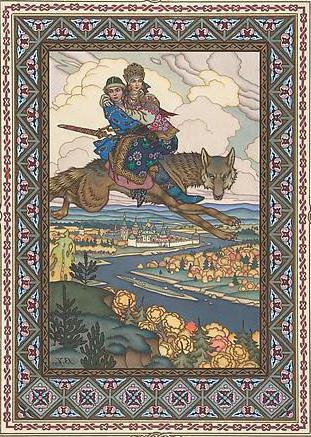
Where is the death of the villain hidden?
In continuation of the tale, which tells not only about the prince, but also about Koshchei the Immortal and the old woman, I must say that the grandmother told Ivan where the death of the evil sorcerer and kidnapper is. She directed the guy to an old oak tree, where a golden chest hung on chains. A hare was hiding in a chest. In the hare is a duck. There is an egg in a duck. And just in the egg was the very needle, on the tip of which the death of the immortal evil goner lived. It can be seen that here the image of Baba Yaga turned out to be extremely positive. Of course, it is not completely clear why she helped a person. Either because of a long-standing feud with Koschey, or simply the old woman wanted to do a good deed at least once in three hundred years.
Assistants of Ivan
Probably, you should not retell in detail the well-known fairy tale about Koshchei. It is enough to mention that Ivan Tsarevich, after a long time, nevertheless found the same treasured oak and cut it down. And then nothing depended on him, because secondary characters entered the business: the wolf, the eagle and the pike, once saved by the prince. And, it seems, they are not worthy of special attention, but even without them the fairy tale would not soon end. It’s worth imagining how our Ivan is chasing a hare that has jumped out of a trunk that has fallen to the ground, and then after a duck flies across the sky on an airplane carpet, and under the water, he searches for an egg in a diver’s suit. It would be funny to see. Perhaps then a completely different story would have turned out. Perhaps no less interesting than the tale itself, but too long as an endless soap opera. Therefore, secondary characters greatly simplify the whole story, and at the same time the life of Ivan Tsarevich.
Winner Image
Since the tale of Ivan and Koshchei is just a fictional story, it ends with the victory of the main positive character and the death of the negative. However, in the redrafted version of the tale, Elena did not return to Ivan, because, supposedly, she loved the old man stingy more than her life. And this, perhaps, does not at all seem like the truth. Indeed, in life, most often young girls are looking for young chosen ones. But there are exceptions. Apparently, in that fairy tale with a non-standard ending just the exception happened. And our winner remained, as they say, with a nose. As he was alone, he has never met true love ever since. And I must add that the very Elena the Beautiful cursed Ivan and his descendants right up to the fortieth generation. And all the last princes were unhappy like their ancestor.
Lessons learned from fairy tales
So what can fairy tales still teach? The question is quite complicated, because each person independently chooses which side he will fight on. While the child is still small, his parents can influence him by setting a positive personal example and useful instructions. And, if the parents themselves adhere to the side of goodness and justice, then children are more likely to gravitate to positive things. They themselves will become those heroes who defend the interests of truth and honor. Never forget about it.